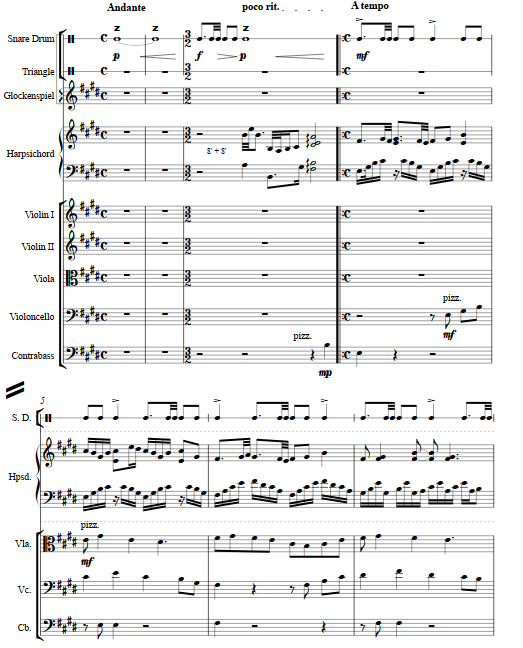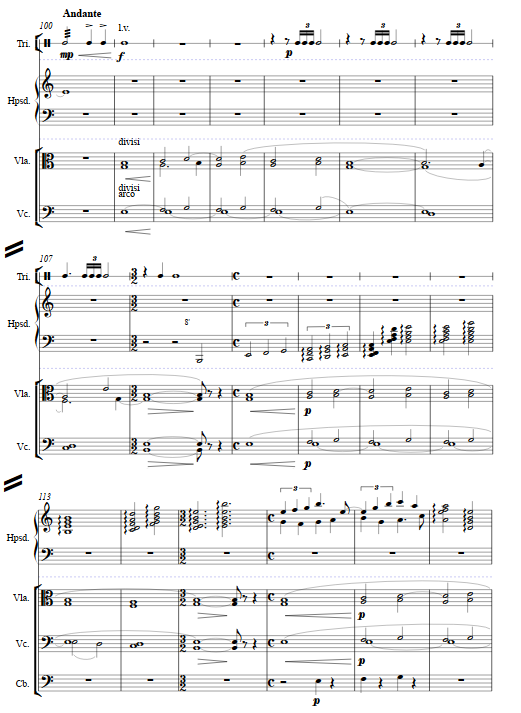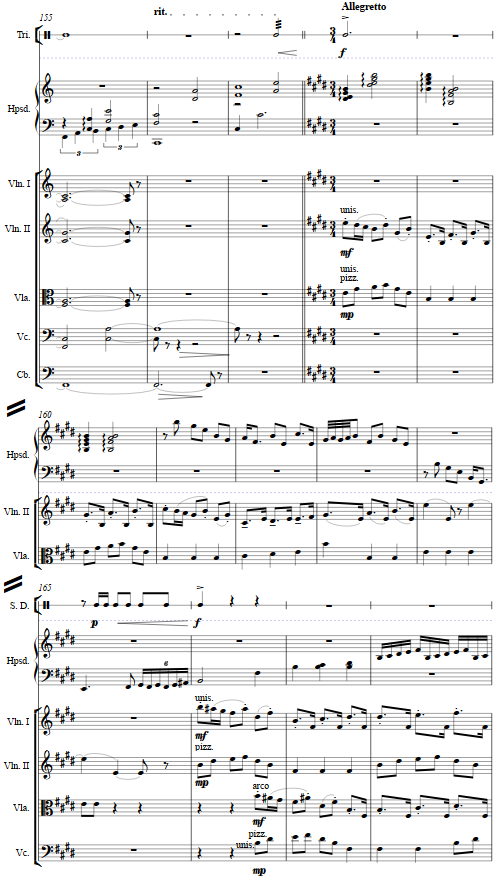Music and Texts of GARY BACHLUND
Vocal Music | Piano | Organ | Chamber Music | Orchestral | Articles and Commentary | Poems and Stories | Miscellany | FAQs
Concerto in E for Harpsichord, Percussion and Strings - (2018)
Conversations with my brother, Gordon, brought recollections to me from my childhood and its musical experiences. From time as a choir boy, the harpsichord seemed a normal part of life. Frank Owen as organist and choirmaster (see more about him in the page on my Contrappunto in A minor
composed in 1999) had built his own, and played it in concerts. My brother recalled that Owen's "garage at his apartment on Mariposa Ave. [in Los Angeles] was his harpsichord workshop as his car dwelt outdoors. He gave me a tour once. He had cut the floor slab, excavated and formed and poured a concrete 'mould' to form the curved side of the case. He steamed the laminated wood, set in the mould and used screw jacks to press the wood into the desired shape."
Other recollections included my being along when my mother visited Morse Preeman Music in downtown Los Angeles. Morse Preeman, on South Spring Street, had its own line of parchment manuscript paper, and that sort of music store with much classical music in stock is lost as the world and technology change. I recall with the incomplete images of a child my mother talking with various customers, one having been Alice Ehlers who was teaching at USC in that time as my brother recalls, as well as many in the academic, church and synagogue music circles.
The idea of a work for harpsichord as solo instrument in a small ensemble has appealed to many, with new repertoire written throughout the 20th century, among them composers Poulenc, de Falla and Górecki.
This small work in three movements begins with a jaunty duple meter theme in E major (and then E minor) for the harpsichord, introduces by the snare drum, and accompanied by strings. The percussionist plays but three instruments: snare drum, triangle and glockenspiel.

The second movement is a set of statements in E Phrygian, beginning in the lower strings, with restatements into the high strings, as the harpsichord decorates in vary ways the tonality.
A return to E major from the Phrygian allows a quick fugue theme in triple meter as contrast to the more comber middle movement. Staccato, marcato and legato phrasing alternate as the subject is announced and then plays out.
27 pages, circa 12' 15" - an MP3 emulation of the work is here:
The score and parts are available as a free PDF download, though any major commercial performance or recording of the work is prohibited without prior arrangement with the composer. Click on the graphic below for this score.
Concerto in E for Harpsichord, Percussion and Strings

